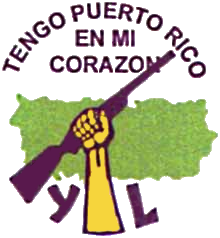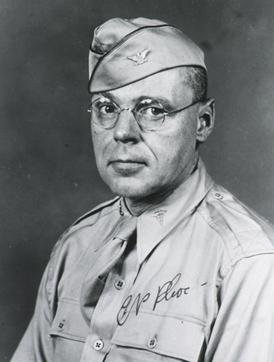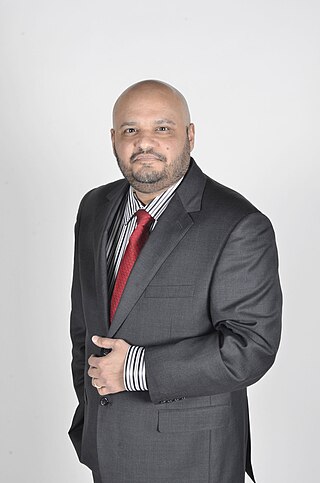Related Research Articles
The Ghetto Brothers were a gang and music group founded in New York City's South Bronx in the late 1960s with the motivation to uplift young Latino and Black men in their community.

The Young Lords, also known as the Young Lords Organization (YLO) or Young Lords Party (YLP), was a Chicago-based street gang that became a civil and human rights organization. The group aims to fight for neighborhood empowerment and self-determination for Puerto Rico, Latinos, and colonized people. Tactics used by the Young Lords include mass education, canvassing, community programs, occupations, and direct confrontation. The Young Lords became targets of the United States FBI's COINTELPRO program.

Eugenio María de Hostos Community College of The City University of New York is a public community college in the South Bronx, New York City. It is part of the City University of New York (CUNY) system and was created by an act of the Board of Higher Education in 1968 in response to demands from the Hispanic/Puerto Rican community, which was urging for the establishment of a college to serve the people of the South Bronx. In 1970, the college admitted its first class of 623 students at the site of a former tire factory. Several years later, the college moved to a larger site nearby at 149th Street and Grand Concourse. The college also operates a location at the prow building of the Bronx Terminal Market.

NYC Health + Hospitals, officially the New York City Health and Hospitals Corporation (HHC), operates the public hospitals and clinics in New York City as a public benefit corporation. As of 2021, HHC is the largest municipal healthcare system in the United States with $10.9 billion in annual revenues, serving 1.4 million patients, including more than 475,000 uninsured city residents, providing services interpreted in more than 190 languages. HHC was created in 1969 by the New York State Legislature as a public benefit corporation. It is similar to a municipal agency, but has a board of directors. It operates eleven acute care hospitals, five nursing homes, six diagnostic and treatment centers, and more than 70 community-based primary care sites, serving primarily the poor and the working class. HHC's own MetroPlus Health Plan is one of the New York area's largest providers of government-sponsored health insurance and is the plan of choice for nearly half a million New Yorkers.

Montefiore Medical Center is a premier academic medical center and the primary teaching hospital of the Albert Einstein College of Medicine in the Bronx, New York City. Its main campus, the Henry and Lucy Moses Division, is located in the Norwood section of the northern Bronx. It is named for Moses Montefiore and is one of the 50 largest employers in New York. In 2020, Montefiore was ranked No. 6 New York City metropolitan area hospitals by U.S. News & World Report. Adjacent to the main hospital is the Children's Hospital at Montefiore, which serves infants, children, teens, and young adults aged 0–21.
Felipe Luciano is a poet, community activist, journalist, media personality, and politician. He is of Afro-Puerto Rican heritage. He is known for his significant involvement in both the Young Lords Party and The Last Poets, and more generally, as "an early and important participant in the awakening of the new consciousness-raising radicalism among Puerto Ricans in New York and across the country in the late 1960s and 1970s."

Cornelius Packard "Dusty" Rhoads was an American pathologist, oncologist, and hospital administrator who was involved in a racist scandal and subsequent whitewashing in the 1930s. Beginning in 1940, he served as director of Memorial Hospital for Cancer Research in New York, from 1945 was the first director of Sloan-Kettering Institute, and the first director of the combined Memorial Sloan–Kettering Cancer Center. For his contributions to cancer research, Rhoads was featured on the cover of the June 27, 1949 issue of Time magazine under the title "Cancer Fighter".

Lincoln Hospital is a full service medical center and teaching hospital affiliated with Weill Cornell Medical College, in the Mott Haven neighborhood of the Bronx, New York City, New York. The medical center is municipally owned by NYC Health + Hospitals.
The Rainbow Coalition was an antiracist, anticlass multicultural movement founded April 4, 1969 in Chicago, Illinois by Fred Hampton of the Black Panther Party, along with William "Preacherman" Fesperman of the Young Patriots Organization and José Cha Cha Jiménez, founder of the Young Lords. It was the first of several 20th century black-led organizations to use the "rainbow coalition" concept.
Cesar Augusto Perales is an American attorney, civil servant and was the previous Secretary of State of New York in the Cabinet of Governor Andrew Cuomo. Perales was appointed by Cuomo on March 31, 2011, and unanimously confirmed by the New York State Senate on June 7.
Lincoln Detox was a drug detoxification clinic in Lincoln Hospital. It was founded in 1970 in the South Bronx by the Black Panther Party, the Republic of New Afrika, the Young Lords, and Students for a Democratic Society. The clinic offered holistic drug rehabilitation, employing acupuncture, Marxist education classes and community service.
Caribbean immigration to New York City has been prevalent since the late 1800s and the early 1900s. This immigration wave has seen large numbers of people from Jamaica, Haiti, Cuba, Dominican Republic, Antigua and Barbuda, Guyana, and Trinidad and Tobago, among others, come to New York City in the 20th and 21st centuries. Caribbeans are concentrated in the Bronx, from 211th Street to 241st Street and Gun Hill Road. There are also Caribbean communities in Brooklyn, especially in the neighborhoods of Flatbush and Prospect Heights.

Helen Rodríguez Trías was an American pediatrician, educator and women's rights activist. She was the first Latina president of the American Public Health Association (APHA), a founding member of the Women's Caucus of the APHA, and a recipient of the Presidential Citizens Medal. She is credited with helping to expand the range of public health services for women and children in minority and low-income populations around the world.
José "Cha Cha" Jiménez is a political activist and the founder of the Young Lords Organization, a Chicago-based street gang that became a civil and human rights organization. Started in September 23, 1968, it was most active in the late 1960s and 1970s.

Raul Vazquez, is a Puerto-Rican primary care physician, philanthropist, the founder and chief executive officer of the Greater Buffalo United Accountable Healthcare Network, and the founder and president of Urban Family Practice P.C. and Westside Urgent Care in Buffalo, New York.
Women in the Young Lords, a Puerto Rican nationalist group founded in the United States in 1969, advocated for racial and gender equality and challenged patriarchy in the organization from 1969-1976. Women members wrote articles in the Palante newspaper critiquing sexist and patriarchal structures and demanded a series of reproductive rights that included access to abortion and an end to forced sterilization. In November 1970, women consisted of roughly forty percent of the group’s membership and were between the ages of 13 and 28. Despite their considerable presence in the YLP, female members were consistently overlooked to occupy high-ranking leadership positions. However, in 1970 Denise Oliver-Vélez was appointed as Minister of Economic Development and became the highest ranking woman in the party.

Denise Oliver-Velez is an American professor, contributing editor, activist and community organizer. Specifically, she is a contributing editor for the blog Daily Kos, and is a former adjunct professor of anthropology and women's studies at SUNY New Paltz.

St Barnabas Hospital is a non-profit teaching hospital founded in 1866. The hospital is located in the Belmont neighborhood of The Bronx in New York City. It is a level II adult trauma center and is a major clinical affiliate for clinical clerkship of the New York Institute of Technology College of Osteopathic Medicine.
Iris Morales is an American activist for Latino/a civil rights, filmmaker, author, and lawyer based in New York. She is best known for her work with the Young Lords, a Puerto Rican community activist group in the United States and her feminist movements within the organization. Morales continues to create a space for people of color to express their voices and histories through a variety of mediums as an advocate for underrepresented people, especially those who identify as LatinX members.
The 1967 New York City riot was one of many riots that occurred during the long, hot summer of 1967. The riot began after an off-duty police officer, Patrolman Anthony Cinquemani, while trying to break up a fight, shot and killed a Puerto Rican man named Renaldo Rodriquez who he claimed was carrying a knife.
References
- ↑ Kanna, Balavenkatesh; Narang, Tarun K.; Atwal, Tegpal; Paul, Doru; Azeez, Sulaiman (2009). "Ethnic disparity in mortality after diagnosis of colorectal cancer among inner city minority New Yorkers". Cancer. 115 (23): 5550–5555. doi: 10.1002/cncr.24614 . ISSN 1097-0142. PMID 19823980. S2CID 23291091.
- 1 2 3 4 5 6 Narvaez, Alfonso (July 15, 1970). "Young Lords Seize Lincoln Hospital Building". New York Times. Retrieved December 4, 2021.
- ↑ Armao, Mark (2015-07-15). "The Art and Activism of the Young Lords". Wall Street Journal. ISSN 0099-9660 . Retrieved 2021-11-10.
- ↑ Browning, Frank (October 1970). "From Rumble to Revolution: The Young Lords". Ramparts Magazine. 9 (4): 19–25 – via DePaul University.
- 1 2 Francis-Snyder, Emma (October 21, 2021). "Takeover: How We Occupied a Hospital and Changed Public Health Care - Op-Docs". YouTube. Archived from the original on 2021-10-12.